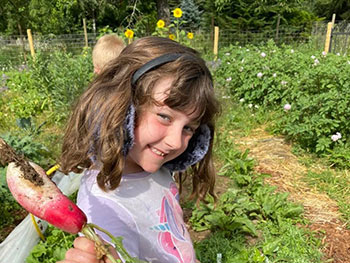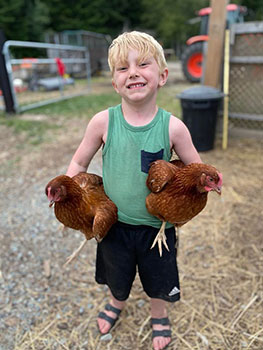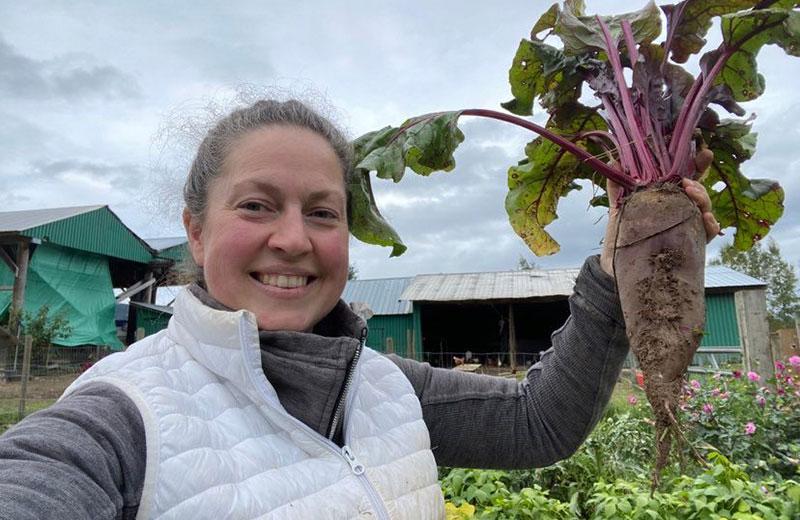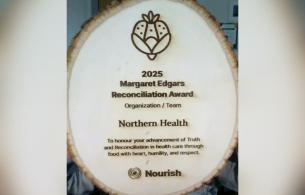March is Nutrition Month, and this year’s theme is Ingredients for a Healthier Tomorrow. This has me reflecting on food literacy – understanding the impact of our food choices on our health, the environment, and our economy.
You see, our family purchased a farm three years ago, with a goal of becoming more self-sufficient. We’re what you call first-generation farmers. In our dietetics program in university, my husband and I studied food, right down to the micronutrients, but we felt that our hands-on knowledge about food was missing. In the end, becoming a farmer made me a better dietitian.
Let me explain. I understood the importance of fresh, locally grown food and how to prepare it. I saw the value in supporting a local farmer or buying in season at the grocery store. However, I had no idea how long food took to grow – be it a vegetable, a piece of fruit, or meat from an animal. I had no idea how long it took to produce a jar of honey. Did you know that each bee produces only one tablespoon of honey in their lifetime?
Food to eat, food to store, and food to share

My husband and I read the book “Folks, this ain’t normal: A Farmer's Advice for Happier Hens, Healthier People, and a Better World” by Joel Salatin, and were inspired to create a diverse farm where the animals and garden worked together. On any given day on our farm, Graham Acres Homestead, you’ll find chickens, ducks, rabbits, goats, pigs, bees, and a cow. They roam around our farm, greeting us with glee as we bring them their next meal, just like our own children.
Our farm provides us with a variety of foods. In some years, the weather is too cold and the bees don’t make honey. In other years, the weather is too hot and the vegetables shrivel up in the greenhouse and garden if we don’t water them enough. At the end of the season, because of the diversity on our farm, we walk away with something to eat, something to store, and something to share -- the surplus we sell to our family and friends.
“Aha!” moments
As a dietitian, I have extensive knowledge of food and nutrition. However, when we started farming, I realized very quickly how very little I understood about our food system. I like sharing what I learn with others, so here are a few of our “aha” moments from the last three years:
- Chickens lay eggs based on daylight hours. What does this mean? It means they don’t lay eggs in the winter – unless you keep the light in their chicken coop on.
- When people talk about seasonal foods, it used to make me think about vegetables and fruits. Imagine my surprise when I learned that proteins, like eggs, meats, and beans, are also seasonal.
- When I was younger, going out with friends for chicken wings was a treat. While processing a chicken recently, I blurted out to my husband, “Oh, my gosh! Do you realize how many chickens it took for us to eat chicken wings? Ten!” Yes, 10 chickens for 20 wings.

Involving the next generation
Our children also learn from the farm – where food comes from, that it takes patience for food to grow before we can eat it, and that if a bee stings you, it can no longer make us honey – plus, that getting stung hurts!
Our children are active members of our farm. They help feed the animals, collect the eggs, and eat, er, pick the garden. On animal processing day, they’re involved as much as they want to be. We answer questions that come up, but most importantly, they help us thank the animals for the meat they are going to provide. Everyone is thanked.
At the beginning, when we would serve chicken for dinner, the kids would ask, “Did we process this one, Mom?” Our answer: “Yes!” Our children are connected to their food supply, and for this we are proud.














Comments